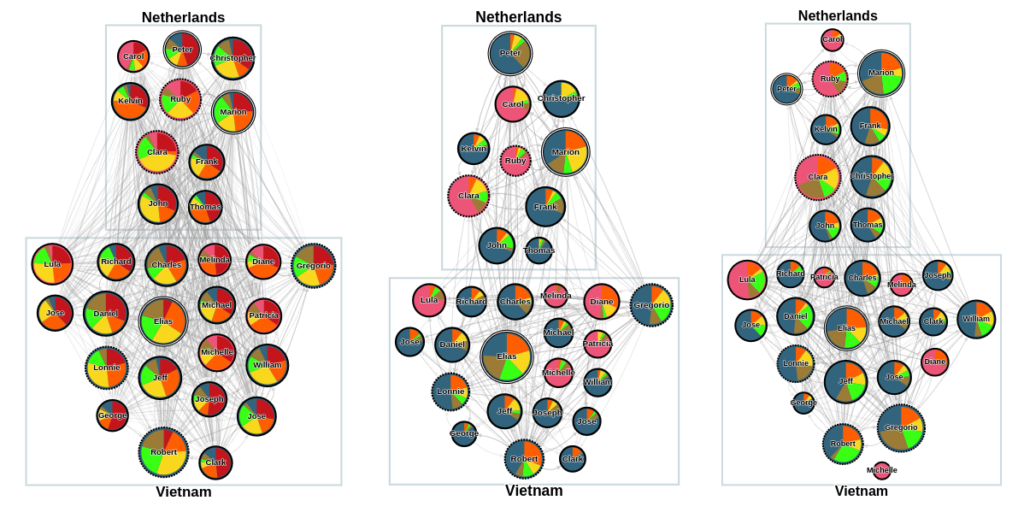There are several ways to explore collaboration. One method for doing this is organizational network analysis (ONA). ONA maps interpersonal relationships between people.
Active versus passive method
ONA is the way to map informal networks. This can be done in two ways: the active and the passive method. An active ONA uses a survey to elicit the necessary information from employees. Thus, this method requires the active contribution of the employee. A passive ONA is based on metadata, such as e-mail traffic or chats. The passive method requires no active contribution from the employee.
The following figure analyzes the same network of an IT company with operations in the Netherlands and Vietnam. Left are the results of an active ONA, right are the results of a passive ONA based on email (center) and chat data (right), respectively. For the active ONA is focused on sharing work-related information and advice. As for the e-mail and chat data, only the frequency of contact was considered.

Findings and conclusions
Obviously, the results are not identical. We see that there seems to be less contact in the passive ONA than in the active ONA. This can be seen by more blue and pink in the networks of mail and chat traffic. This conclusion would be premature.
The correct interpretation is that the passive ONA focuses on a single form of contact (mail or chat), while in the active ONA respondents include all forms of exchange of work-related information and advice. In other words, the quick tune-up around the coffee machine is also included in an active ONA.
However, a positive correlation can be seen in the outcomes. The top influencers in the active ONA tend to score higher in the passive ONA as well. This can be seen by the size of the spheres in the network. So the people who email and chat more are also the people who are more often seen as sources of information and advice. Which method is most appropriate depends on the situation in which the ONA is being used.
Key features at a glance:
- An active ONA:
- Provides a very focused form of network analysis
- Requires a contribution from the employee
- Provides results from which more specific conclusions can be drawn, depending on the context of the ONA
- A passive ONA:
- Provides a more general picture of contact
- Requires no active contribution from the employee
- Lends itself best to general conclusions about contact within an organization or team
Want to know more about the active or passive method for organizational network analysis? If so, please contact us at info@qultify.com or make an appointment.













